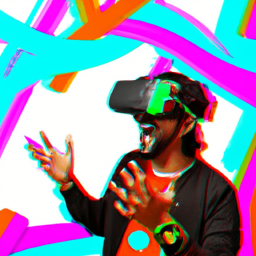Incorporating Augmented Reality into Your Marketing Strategy
As technology continues to advance, businesses are constantly looking for innovative ways to engage with their audience and stand out from the competition. One such technology that has been gaining popularity in recent years is augmented reality (AR). By seamlessly blending the real world with digital elements, AR offers a unique and immersive experience for users. This opens up exciting possibilities for businesses to incorporate AR into their marketing strategies and create memorable experiences that leave a lasting impression.
What is Augmented Reality?
Before we dive into how businesses can leverage AR in their marketing strategies, let’s first understand what augmented reality is. AR is a technology that enhances the real world by overlaying digital elements such as images, videos, and 3D objects onto our physical environment. Unlike virtual reality (VR) which creates a completely virtual world, AR enhances our existing reality, making it more interactive and engaging.
How can businesses leverage AR in their marketing strategies?
1. Interactive Product Demonstrations
AR allows businesses to provide their customers with interactive product demonstrations. Instead of relying on static images or videos, customers can use their smartphones or AR-enabled devices to experience products in a more immersive way. For example, a furniture retailer could offer an AR app that allows customers to see how a particular sofa would look in their living room before making a purchase. This not only enhances the shopping experience but also boosts customer confidence.
2. Virtual Try-Ons
AR can revolutionize the way customers try on products before buying them. Whether it’s trying on clothes, accessories, or makeup, customers can use AR apps to virtually try on items in real-time. This eliminates the need for physical fittings and allows customers to visualize how a product would look on them without leaving their homes. This not only saves time and effort but also reduces the chance of returns, resulting in higher customer satisfaction.
3. Location-Based Experiences
AR can be leveraged to create location-based experiences that drive foot traffic to physical stores. For example, a restaurant could use AR to create a treasure hunt around the city, where customers have to use an AR app to find hidden clues and redeem rewards at the restaurant. This not only encourages customers to visit the physical location but also creates a sense of excitement and engagement.
4. Storytelling and Branding
AR offers a unique opportunity for businesses to tell their brand stories in a more interactive and immersive way. By overlaying digital elements onto physical packaging or print materials, businesses can create interactive experiences that leave a lasting impression on customers. For example, a cereal brand could use AR to bring their mascots to life on their cereal boxes, allowing customers to interact with them through their smartphones. This not only enhances the brand’s image but also creates a memorable experience that customers are likely to share with others.
5. Gamification
AR can add an element of gamification to marketing campaigns, making them more engaging and interactive. By creating AR-based games or challenges, businesses can incentivize customers to interact with their brand and products. For example, a sports apparel brand could create an AR game where customers have to catch virtual basketballs using their smartphones. This not only entertains customers but also increases brand awareness and exposure.
Conclusion
Augmented reality has the potential to revolutionize the way businesses engage with their audience and market their products or services. By incorporating AR into their marketing strategies, businesses can provide interactive product demonstrations, virtual try-ons, location-based experiences, immersive storytelling, and gamification. This not only enhances customer engagement and satisfaction but also helps businesses stand out from the competition in today’s digital age. So why not consider incorporating AR into your marketing strategy and unlock the full potential of this exciting technology?


